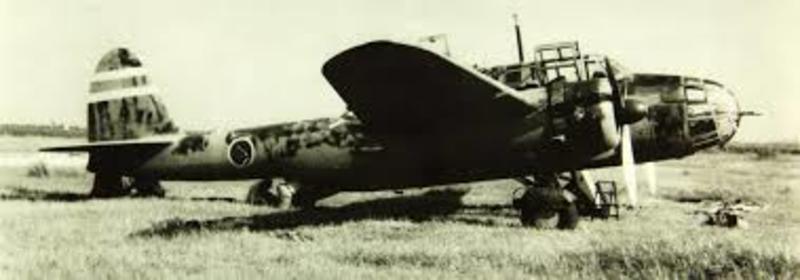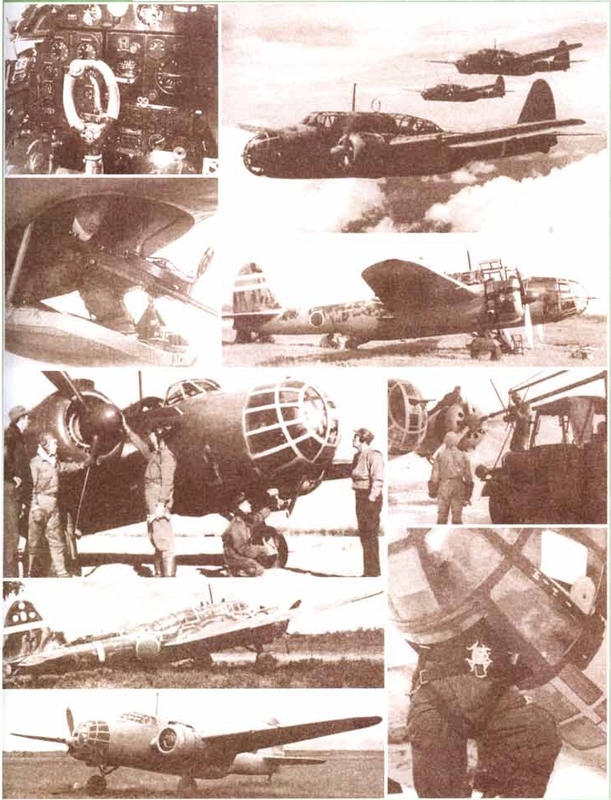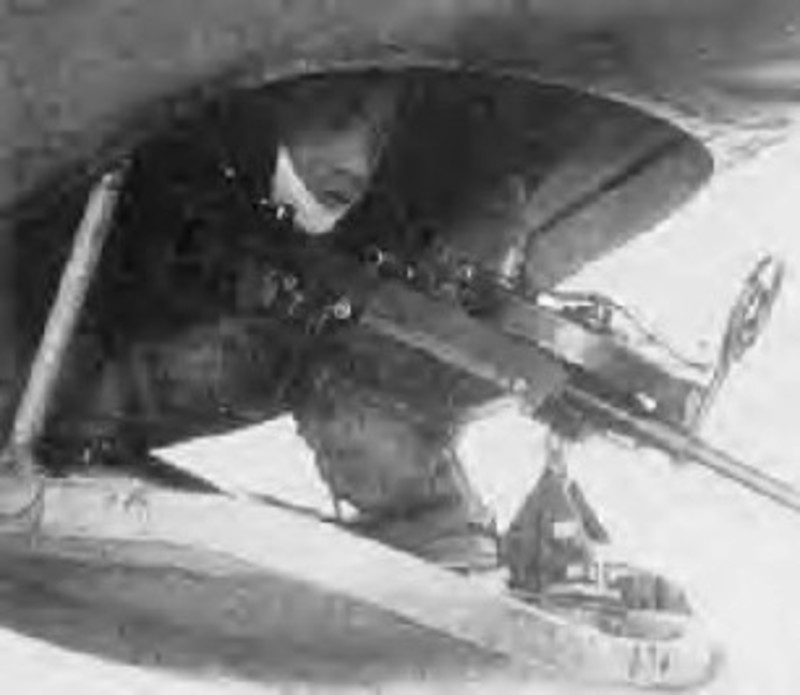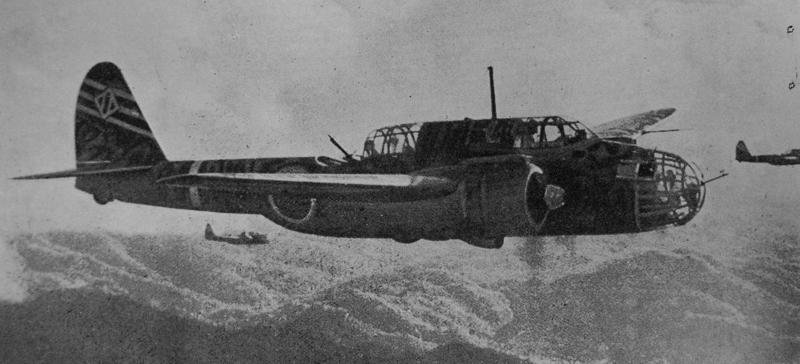
The Ki-48 ( Lily ) Ia, Ib, IIa, IIb, IIc, and II Kai "Kamikaze" ( Tai-Atari ) Would be an Excellent Aircraft for IL2.
Being that it Actively Served with The Imperial Japanese Air Force from 1940-45 and Flew The Final 20 Bombing Sorties of any Japanese Bomber Aircraft of The War Against The Soviets in 1945.
DevelopmentThe '''Kawasaki Ki-48''', ????????? 'Sokei', '''Army Type 99 Twin-engined Light Bomber''', was a Japan+ese twin-engine light bomber+ that was used during World War II+. Its Allied+ reporting name+ was "'''Lily'''".
The development of the aircraft began at the end of 1937 at the request of the Japanese military high command. Kawasaki received an order to develop a "high-speed bomber+" capable of 480 km/h (300 mph) at 3,000 m (9,840 ft), and able to reach 5,000 m (16,400 ft) within 10 minutes. It was inspired by the Soviet Tupolev SB+.
Kawasaki had the advantage of the experience of designing the Ki-45+ twin-engined heavy fighter+. Most technical problems were solved; however the aircraft had a number of defects. It could carry only an 800 kg (1,760 lb) bombload (less than the single-engined Hawker Typhoon+ fighter-bomber+) and was equipped only with three machine gun+s, which made it very vulnerable to enemy fighters. The flight characteristics of the Ki-48 also left much to be desired. Allied fighters caught up in speed, and eventually, the Ki-48 was too slow to outrun them. Thanks to the fact that the first versions were under-armoured+, the Ki-48 could loop and turn with an experienced pilot at the controls. The aircraft was often used as a dive bomber+ in Burma. The aircraft was not necessarily a failure, and was considered an acceptable light bomber for the first few years of the war by many historians.Brief HistoryThe aircraft served in China+ from late 1940, replacing the Kawasaki Ki-32+, and were widely used in the Philippines+, Malaya+, Burma+, New Guinea+, the Solomon Islands+ and the Dutch East Indies+, where the Ki-48 Ia and Ib models, slow and badly armed, were supplemented by the marginally improved Ki-48 IIa and IIc, which were maintained in service along with the older types until the end of the war.
All models continued in service until the Battle of Okinawa+ during April 1945, when many were converted into ''kamikaze+'' aircraft (Ki-48-II KAI ''Tai-Atari+'') armed with an 800 kg (1,760 lb) bomb.
The fact that all models continued in service until 1945 reflects that many Ki-48s survived more often than not. This was due to the use of small ship formations (3–10 aircraft) escorted by large numbers of fighters (25–75), typically Nakajima Ki-43+s. Although not as fast as more modern fighters, after 1942, the aircraft was still fast enough to enable it to often avoid interception. The 90th Air Regiment of the 5th Air Army (based in Hopei, north China) equipped with Ki-48s was the only Japanese air unit in China proper to engage the Soviets, although others were advanced in preparation. It flew 20 sorties against the Soviets during 14 August 1945.
The British Pacific Fleet+ departed from Ceylon+ on 16 January 1945 en route to Australia+, and struck Japanese-held oil wells and refineries at Palembang+, Sumatra+ on 24–29 January 1945 in Operation Meridian+.
On 29 January, seven Kawasaki Ki-48 of the Army's ''Shichisi Mitate Tokubetsu K?geki Tai+'' counter-attacked the Allied fleet at low level as the British aircraft were returning from Palembang. The British radar picture was confused by the presence of over 100 friendly aircraft and the first two or three Supermarine Seafire+ CAP+ interceptions did not occur until just before the Ki-48 entered the air defence zone. The last pair of Seafires chased the five remaining Ki-48s inside the screen, and with the support of returning Vought F4U Corsair+s and Grumman F6F Hellcat+s which had just been scrambled, shot down all of them, amongst intense AA fire. One Seafire was slightly damaged and one Hellcat was written off by friendly fire, but the only ship to be damaged was the carrier , hit by heavy AA shells.
Such success, minor by Pacific fighting standards at the time, gave the British Pacific Fleet useful expertise and confidence in its ability to deal with ''kamikaze'' attacks.Variants; Ki-48
:Four prototype+s with Ha-25 engines of 708 kW (950 hp), and five pre-production aircraft, with modified tail surfaces.
; Ki-48-Ia
:Army Type 99 Twin Engine Light Bomber Model 1A; as first series model. Produced from 1940, 557 built.
; Ki-48-Ib,
:Similar to the Ia, with changes in defensive machine gun mountings.
*Total production of Ki-48 Ia and Ib: 557 aircraft
; Ki-48-II
:Three prototypes built.
; Ki-48-IIa
:Fitted with more powerful engines, a longer fuselage, additional armour, and larger bomb load. Produced from April 1942.
; Ki-48-IIb
:Dive bomber version, with reinforced fuselage and dive brakes.
; Ki-48-IIc
:Improved defensive weapons. Produced from 1943.
* Total production of Ki-48 IIa, IIb and IIc: 1,408 aircraft
; Ki-48-II KAI ''Kamikaze'' (Type Tai-Atari)
:Conversion with 800 kg (1,760 lb) of explosives and two or three pilots for ''kamikaze'' missions
; Ki-81
:Proposed version of the Ki-48. Not built.
; Ki-174
:Single-seat special attack version. Not built.
* Total production of all versions: 1,977 aircraftUnits Served JAAF and Others*Imperial Japanese Army Air Force+
** 3rd Attack Air Combat Regiment (June 1942-June 1945)
** 6th Attack Air Combat Regiment (1942–1945)
** 8th Light Bomber Air Combat Regiment (August 1941 – 1945)
** 12th Light Bomber Air Combat Regiment (April 1944-August 1945)
** 16th Light Bomber Air Combat Regiment (1941–1945)
** 34th Light Bomber Air Combat Regiment (October 1942-April 1944)
** 35th Light Bomber Air Combat Regiment (1942–1944)
** 45th Attack Air Combat Regiment (July 1940-February 1944)
** 65th Attack/Light Bomber Air Combat Regiment (1940-July 1941)
** 75th Attack Air Combat Regiment (1941-April 1945)
** 90th Light Bomber Air Combat Regiment (October 1941-August 1945)
** 206th Light Bomber Air Combat Regiment (June 1941-July 1941)
** 208th Light Bomber Air Combat Regiment (March 1941-May 1945)
** 82nd Independent Light Bomber Company (1940–1942)
** 21st Independent Headquarters Flight (July 1939-15 October 1942)
** Hokota Army Light Bomber Flying School
** Hokota Light Bomber Instructing Flight Division
** Mito Army Flying School
** Army Aviation Maintenance School
** Tokorozawa Army Aviation Maintenance School
;China as ROC:
*Chinese Nationalist Air Force+
**6th Group
***5th Squadron operated captured aircraft.
;PRC:
*Chinese Communist Air Force+ operated captured aircraft. The last Ki-48 retired from training role in 1952.
;IDN:
*Indonesian People's Security Force+ operated one aircraft against Dutch colonial rule. This aircraft was put together from bits and pieces of a number of aircraft to become the first twin-engined bomber in the Indonesian People's Security Force.SpecificationsGeneral characteristics
Crew: Four
Length: 12.75 m (41 ft 9 in)
Wingspan: 17.45 m (57 ft 3 in)
Height: 3.8 m (12 ft 5 in)
Wing area: 40 m² (430.555 ft²)
Empty weight: 4,550 kg (10,031 lb)
Loaded weight: 6,500 kg (14,350 lb)
Max. takeoff weight: 6,750 kg (14,881 lb)
Powerplant: 2 × Nakajima Ha.115 radial engines, 843 kW (1,130 hp) each
Performance:
Maximum speed: 505 km/h (273 kn, 314 mph) at 5,600 m (18,375 ft)
Range: 2,400 km (1,296 nmi, 1,491 mi)
Service ceiling: 10,100 m (33,135 ft)
Armament:3 × 7.7 mm (0.303 in) Type 89 machine guns, in nose, dorsal and ventral positions
800 kg (1,764 lb) of bombs 











 Conclusion
ConclusionI Looked for WIPs or any Ki-48 Content and did not find anything. If I missed anything, anywhere, Sorry!
I hope others might like this request and can offer any more content for this Particular Aircraft. Thank You Especially SAS and ALL The Modders out there that keep this Game Interesting to NO END!
 Author
Topic: REQUEST FULFILLED !!!Kawasaki Ki-48 Sokei ( Lily ) JAAF Fast Light Bomber (Read 6848 times)
Author
Topic: REQUEST FULFILLED !!!Kawasaki Ki-48 Sokei ( Lily ) JAAF Fast Light Bomber (Read 6848 times)


